Google’s recent Pixel phone offerings have focused on delivering smart and helpful features, promising to simplify daily tasks. While the Pixel 6 and 7 didn’t fully realize this vision, the Pixel 8 devices appear to be a step closer to turning that vision into reality. The Pixel 8 and 8 Pro are indeed better phones than their predecessors in various ways, but they also come with a higher price tag. Each device sees a $100 price increase, with the Pixel 8 priced at $699 and the Pixel 8 Pro at $999. This signifies a shift from the standard Pixel being seen as an upper-tier midrange phone to being positioned as flagship devices.
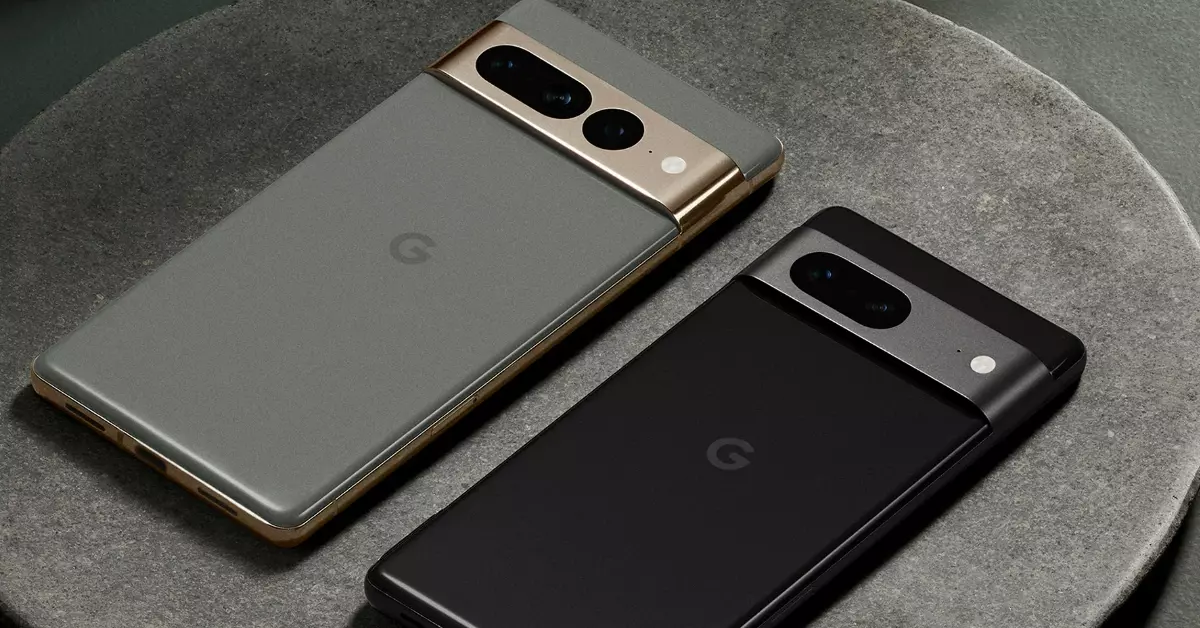
On the bright side, users can expect longer support for these devices. Google is committing to providing seven years of software updates, including not just security patches but also OS platform upgrades. This represents a significant improvement over the previous promise of three OS updates for the Pixel 6 and 7, making it one of the most generous software support policies in the smartphone industry.
Pixel 8 and 8 Pro’s Upcoming Features and Potential Transformative AI
The Pixel 8 and 8 Pro are set to receive some powerful photo and video editing tools in December 2023, enhancing their capabilities. Additionally, both phones will be eligible for Assistant with Bard in the near future, pending testing. The introduction of Bard’s generative AI could potentially revolutionize Google Assistant’s functionality, turning it into a more comprehensive virtual assistant.
However, these developments are contingent on various factors, and Google’s track record with certain promises has led to skepticism. For instance, the company canceled the Pixel Pass subscription program just before its two-year mark, raising concerns about long-term commitments.
Despite these uncertainties, the Pixel 8 and 8 Pro bring notable improvements over their predecessors. The standard Pixel 8 now features a 120Hz refresh rate display, and both models support Face Unlock for payments and password managers, aligning with Google’s passwordless passkey vision. Natural language processing has improved, enhancing voice typing. The phones also introduce AI-powered image and video editing tools that challenge the authenticity of media content, a feature appreciated by many users, especially parents capturing moments with their children.
Both phones receive display upgrades, with the Pixel 8 offering a jump to a 120Hz refresh rate. The Pixel 8 Pro’s Super Actua screen features a variable refresh rate, ranging from 120Hz down to 1Hz for energy efficiency. Users can enable the Pixel 8’s top refresh rate in the settings for a noticeably smoother experience.
The screens on both devices are brighter, reaching up to 2,000 nits for the Pixel 8 and 2,400 nits for the 8 Pro. However, prolonged use at peak brightness may be limited in hot conditions, as the displays may dim due to heat. Despite this limitation, the increased brightness is a welcome improvement.
Pixel 8 and 8 Pro Screen Differences and Design Changes
The Pixel 8 features a slightly smaller screen compared to the Pixel 7, measuring 6.2 inches instead of 6.3 inches. This results in a slightly smaller overall phone size. A significant design change is that the screens on both models are flat rather than curved along the long edges. The flat edges offer a bit more grip and make the phones feel easier to hold without compromising their Pixel identity. Although the bezels are slightly more prominent due to this change, it doesn’t significantly affect the overall experience.
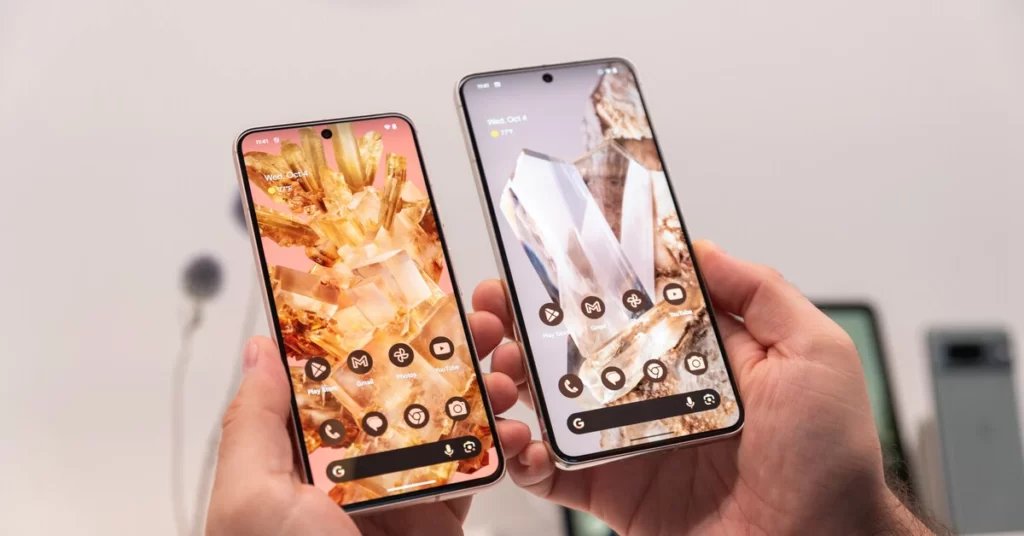
The standard Pixel 8 is a more reasonably sized phone compared to previous years when size options were limited to bigger and biggest. It falls into the lower end of the big category, and I believe that a 6.1-inch screen size is the most neutral. For those seeking a premium Android device with that screen size, the Samsung Galaxy S23 is suggested as a smaller alternative.
On the back panel, the Pixel 8 Pro features a matte finish, replacing the glossy back glass, and is available in a new baby blue color option. The matte surface, while smooth, can make the phone feel slightly more slippery in hand compared to smooth glass.
Performance and Battery Life
Both phones are powered by the Tensor G3, Google’s third-generation custom chipset. However, Tensor has a reputation for potential overheating issues, with the Pixel 8 Pro refusing to capture video at its highest resolution on a hot day. The Pixel 8 Pro only experienced noticeable warming a few times, primarily during extended use of location services.
In terms of daily tasks, Tensor G3 performs smoothly. The Pixel 8 has 8GB of RAM, while the Pixel 8 Pro boasts 12GB. I have noted some struggles when taking back-to-back portrait mode shots on the Pixel 8 Pro, with the phone needing a moment to catch up, causing some missed shots.
RELATED: Google Pixel 8 – In-Depth Analysis of Advantages and Drawbacks in the Competitive Smartphone Market
The new chipset doesn’t seem to significantly impact battery life, allowing for comfortable heavy use throughout the day but not pushing into two days. The Pixel 8 Pro supports slightly faster charging (30W wired), while the Pixel 8 offers up to 27W wired charging. Wireless charging is also available, with the Pixel 8 Pro supporting up to 23W and the Pixel 8 up to 18W. However, achieving these charging speeds may require a second-gen Pixel Stand. On a standard Qi wireless charger, both phones reach up to 12W.
Temperature Sensor and Face Unlock Improvements in Pixel 8 Pro
The Pixel 8 Pro includes an unusual addition, a temperature sensor, the practical purpose of which remains unclear. It is speculated that this sensor was added to the Pixel roadmap around 2020 when people were more concerned about taking their temperatures. Google has applied to the FDA to use it for measuring body temperature, but as of now, it cannot accurately serve this function.
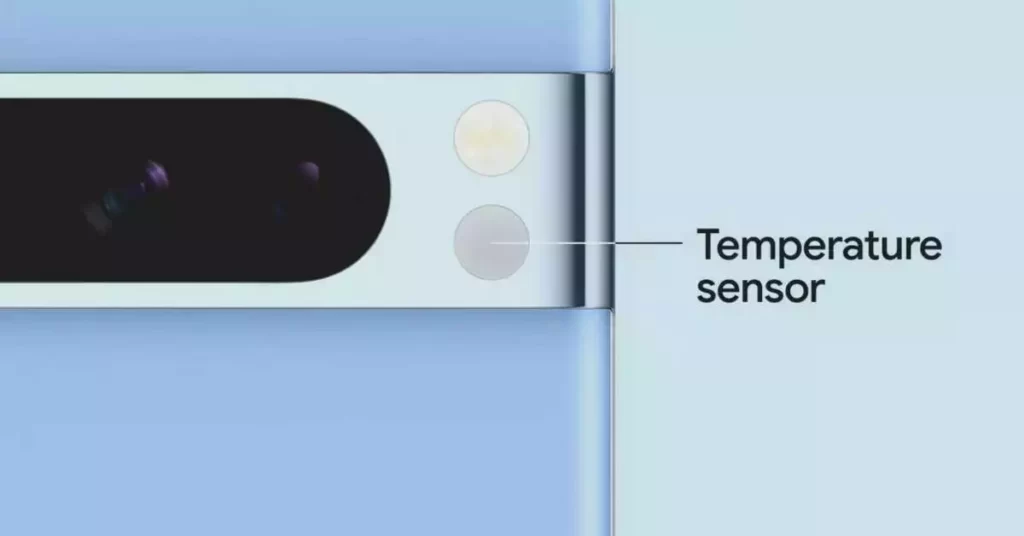
I didn’t find many practical uses for the temperature sensor during testing, except for its ability to inform them that a cup of hot coffee was indeed hot. At this point, the sensor is seen as a gimmick unless the FDA clears it for use as a real thermometer.
A non-gimmicky feature added to the Pixel 8 Pro is the upgrade of Face Unlock to a Class 3 biometric. This means it can be used for highly secure functions like mobile payments and banking apps. Face Unlock was introduced with the Pixel 7 series, but users still needed to use fingerprint scanning for payments and certain tasks. With the Class 3 upgrade, password managers can also use Face Unlock system wide, making phone usage more seamless by eliminating the need to reposition hands for fingerprint scanning.
This small feature has a significant impact, especially on a phone designed to minimize user friction throughout the day. Face Unlock’s Class 3 upgrade is seen as a must-have feature in the Pixel 8.
Improved Voice Interaction and On-Device AI in Pixel 8 and 8 Pro
The Pixel 8 and 8 Pro have improved voice interaction with Google Assistant. They can better understand pauses and inflections when talking to the Assistant, allowing for more natural conversations. The Assistant can also recognize when you switch between languages. While these upgrades might seem subtle, they significantly improve user experience. For example, voice typing now adds appropriate punctuation when you pause or inflect your speech. The Pixel 8 Pro’s Assistant lets you finish your thoughts without prematurely answering, making interactions more relaxed and conversational.
Additionally, the Pixel 8 Pro has an on-device AI advantage, supporting generative AI models that can perform tasks like an enhanced Magic Eraser, which can convincingly remove larger objects. Google plans to expand these on-device AI capabilities to include features like summary recaps in Google Recorder and better smart replies in the keyboard. However, the standard Pixel 8 doesn’t support on-device AI and may miss out on some of these feature upgrades.
Pixel 8 and 8 Pro Camera Hardware and Features
The Pixel 8 and 8 Pro feature upgraded camera hardware, with a 50-megapixel sensor and an f/1.7 lens on the main camera. Both phones have a 12-megapixel ultra wide camera, and the Pixel 8 Pro boasts an improved 48-megapixel ultrawide with a close focusing capability of 2cm. The Pixel 8 Pro also has a 48-megapixel 5x telephoto lens with an f/2.8 aperture. While the standard Pixel 8 lacks a telephoto lens, both devices offer a 2x lossless crop zoom from the center of the main camera sensor. The selfie camera is 10 megapixels on both phones, but only the 8 Pro’s selfie camera has autofocus.
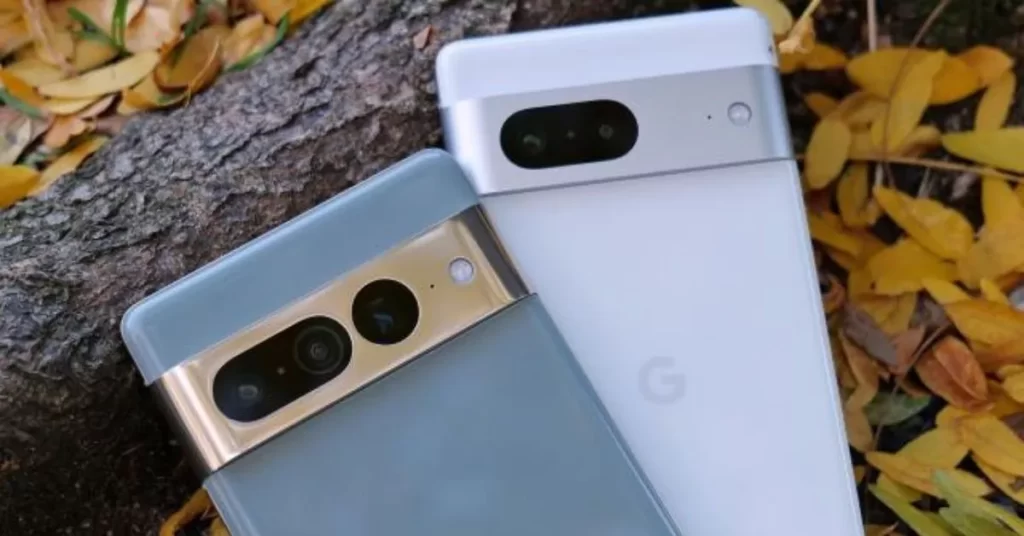
The first two-thirds of the light-to-photo pipeline in the Pixel camera continue to deliver impressive results. The camera captures sharp images, particularly with subjects in motion, and Face Unblur is a standout feature that often produces sharper images than the competition.
Both phones support Ultra HDR capture and display, providing brighter white highlights in high-contrast scenes. Ultra HDR images are more vibrant than standard dynamic range (SDR) images, and Google continues to embrace warmer tones in its color rendering. Portrait mode could use further improvement, as subject cutouts are not as refined as in some competitors.
Pixel 8 Pro owners have access to manual exposure controls called Pro Controls, enabling adjustments to shutter speed, ISO, white balance, and more within the native camera app. This feature enhances flexibility for advanced photography in various lighting conditions, including the option for manual Night Sight with exposure adjustments. The manual focus option includes focus peaking, making it easier to use the macro mode.
Pixel 8’s AI Editing Tools in Google Photos
The Pixel 8 and 8 Pro come with new AI editing tools in Google Photos, and some features like Zoom Enhance and Video Boost will be available later for the Pixel 8 Pro. The tools currently available include Best Take, Audio Magic Eraser, and the beta feature Magic Editor.
Best Take: This feature is designed for users who take multiple photos in quick succession with at least one person in the frame. Best Take allows you to swap different facial expressions for each person by selecting and auditioning expressions for each face. It works impressively well with good lighting and visible subjects, often providing seamless face swaps. However, it’s not always perfect, and there can be occasional issues like positioning errors or anomalies, such as extra limbs.
ALSO READ: Unlock Efficiency and Productivity: The Power of OCR Apps for Your Android Device!
While Best Take offers practical applications for creating ideal group photos, it raises ethical questions regarding image manipulation and privacy.
Magic Editor: This generative AI tool in Google Photos enables users to select areas of an image they want to move or delete, and AI fills in the gaps. It can also modify lighting and replace the sky, but users are limited to suggested prompts for these adjustments. Magic Editor is highly capable and can convincingly remove objects or relocate subjects in photos, making it a valuable tool for editing images. However, the ease with which it can manipulate reality can be disconcerting.
Users may find themselves wrestling with the ethical implications and personal boundaries when using these advanced AI editing features, as they offer significant creative potential but also raise questions about authenticity and the potential for misuse.
Ethical Concerns with Advanced AI Editing Tools
Google’s introduction of advanced AI editing tools in its Pixel smartphones, particularly the Best Take and Magic Editor features, has raised significant ethical concerns. These tools are closely integrated into the photo-taking process, enabling users to easily manipulate images, and this has sparked discussions about their societal and ethical implications.
One key concern is the potential for these tools to enable deception, erode the authenticity of photographs, and contribute to the spread of manipulated or misleading images. While Google adds metadata to indicate that an image was AI-generated, this metadata may be stripped out when photos are shared on social media platforms.
Users’ personal comfort levels with these tools can vary significantly. Some may appreciate the creative potential they offer for enhancing photos and solving common photography issues, such as removing distracting objects. However, the ethical line is subjective, and these tools raise questions about altering reality and the potential consequences for society.
In this context, the ethical use of these tools remains a matter for individual judgment, with some users finding satisfaction in their creative utility while others grapple with ethical concerns and the impact on authenticity and trust in photography.
Advanced Audio Editing on Pixel 8 and 8 Pro
The Pixel 8 is equipped with advanced audio editing features that amplify voices against background noise while recording, resulting in impressive audio quality. For example, I recorded a video while walking next to a busy street, and the edited clip sounded as though they were in a quiet environment, effectively eliminating background noise. These features are especially useful for improving video recordings in noisy environments and offer significant utility for everyday use.
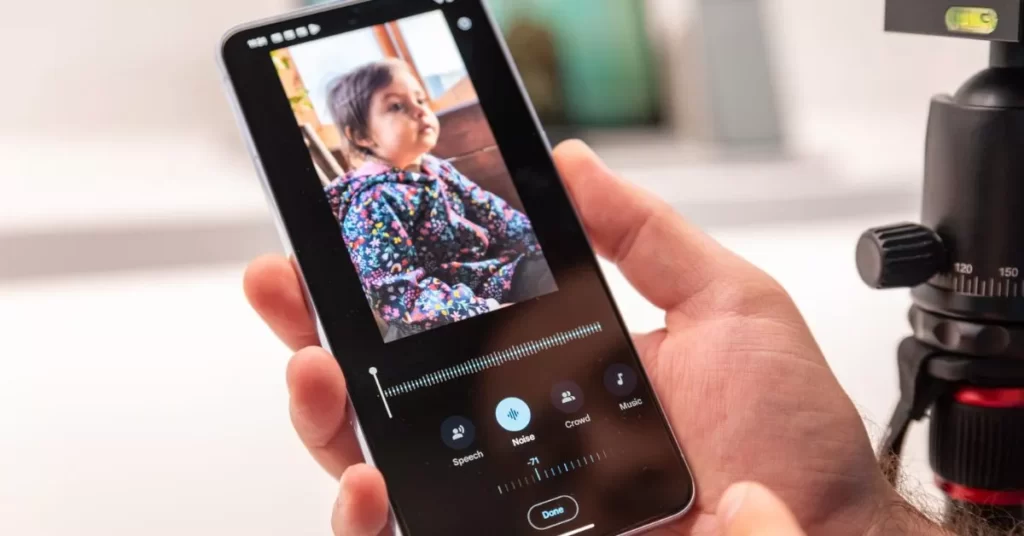
Audio Magic Eraser
This feature is generally viewed as less ethically problematic. It automatically identifies different sounds in video clips and separates them into channels, making it easier to control audio in videos by reducing or eliminating unwanted noise, background music, or speech. While it might not pose the same ethical concerns as image manipulation, it can be a useful tool for improving the audio quality of videos.
Present vs. Future Promise
The idea of not purchasing a product based on its potential future features but rather on its current offerings. The Pixel 8 and 8 Pro are already excellent phones, offering flagship-worthy features like high-quality screens, capable cameras, and comfortable designs. However, the most compelling case for these phones is their potential for future updates and improvements.
Pixel 8 vs. Pixel 8 Pro
The Pixel 8 is a well-suited mainstream phone with a $700 price tag, offering a top-tier display, capable camera, and comfortable form. While it lacks some of the features of the Pixel 8 Pro, it provides great value to the average user. For just $100 more, the Samsung Galaxy S23 offers a telephoto lens but comes with a smaller screen.
The Pixel 8 Pro is a more gadget-oriented device, featuring a versatile camera system, upgraded hardware, a more advanced screen, and additional features like a temperature sensor. Priced at $999, it competes directly with the Samsung Galaxy S23 Plus, offering a compelling alternative with a different set of strengths.
Potential for the Future
Both Pixel models come with potential feature updates that could change the way users interact with their phones. Improved natural language interpretation, AI models, and integration with Bard have the potential to enhance the functionality and usefulness of Google Assistant. The Pixel 8 and 8 Pro’s value proposition extends to their future promise and how they might evolve to offer more to users.
The Long-Term Outlook for Google’s Pixel 8 and 8 Pro
When considering Google’s Pixel 8 and 8 Pro, it’s essential to recognize the potential for these devices to receive OS platform updates for several years. While it’s feasible that in seven years, these smartphones will only be approaching their last update, Google has a track record of delivering on its software support commitments.
ALSO READ: Revolutionary iPhone 16 Ultra Leaks: What’s in Store for Apple’s Game-Changer!
The level of trust you place in Google to fulfill these promises and safeguard your personal information should play a pivotal role in your decision to embrace the Pixel 8. Although these devices offer greater potential than ever, they come with a higher price tag. Determining whether you can rely on Google to make this investment worthwhile is a matter of personal comfort and preference, a decision that varies from one individual to the next.
Verdict
Google’s Pixel 8 and 8 Pro present a promising vision of the future of smartphones. These devices offer a compelling blend of upgraded hardware, advanced software features, and a notable commitment to software support, promising users a reliable and up-to-date experience for years to come. With Google pledging seven years of software updates, they lead the industry in providing extended support.
The Pixel 8, priced at $699, stands out as an excellent mainstream phone, offering a high-quality display, capable camera system, and a comfortable design. It’s a solid choice for those seeking flagship-worthy features without the premium price tag.
Meanwhile, the Pixel 8 Pro, priced at $999, caters to tech enthusiasts and gadget aficionados. With its versatile camera system, upgraded hardware, and innovative features like a temperature sensor, it competes effectively with other flagship devices. However, it falls on users to weigh the value of these features against the higher cost compared to the standard Pixel 8.
The long-term potential of these devices is a significant selling point. Enhanced voice interaction, generative AI, and integration with Bard offer the promise of a more comprehensive and capable virtual assistant. These future updates have the potential to elevate the Pixel experience.
However, the introduction of advanced AI editing tools in Google Photos raises ethical questions about image manipulation and authenticity. While these tools empower users with creative potential, they also bring concerns about the misuse of manipulated images and the erosion of photographic authenticity.
Ultimately, the decision to embrace the Pixel 8 or 8 Pro depends on your level of trust in Google’s commitment to fulfilling its promises and safeguarding your data. These devices are positioned to deliver value not only now but also in the future, and your personal comfort and preference will play a pivotal role in that decision.









